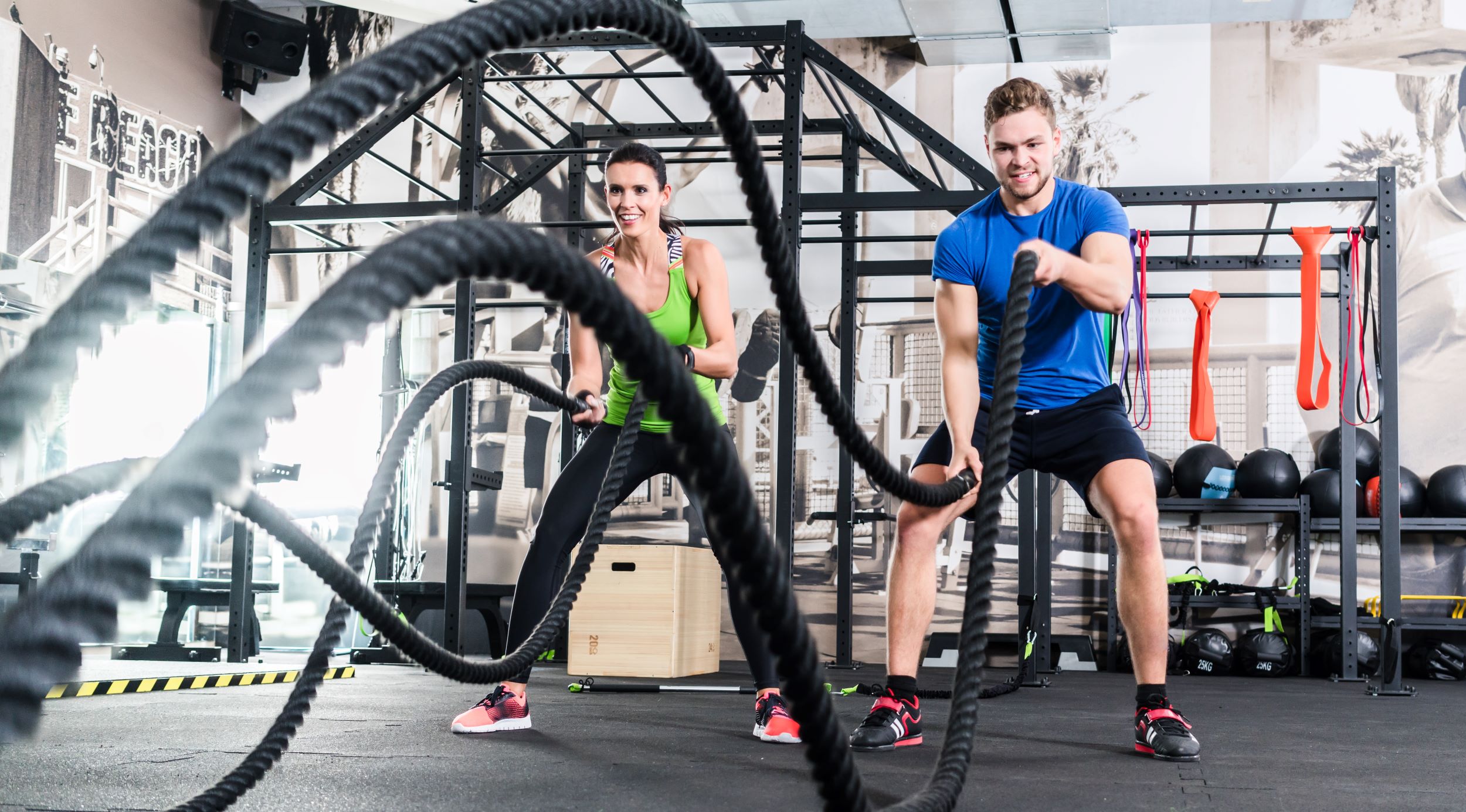Embarking on a weight loss journey can often feel like navigating through a maze of workout options, each promising to be the silver bullet for fat loss. However, an approach that combines the high-intensity, functional movements of CrossFit with the endurance-building benefits of running has emerged as a powerful duo for those seeking to maximize weight loss and enhance overall fitness. This synergistic combination leverages the strengths of both disciplines to create a comprehensive fitness regimen.
Engaging in CrossFit workouts, you’ll benefit from the metabolic boost that comes from high-intensity interval training (HIIT), which is known to increase calorie burn long after the workout is done. When you pair this with the cardiovascular benefits of running, you not only burn calories efficiently during the run but also build the stamina and endurance necessary to perform better during CrossFit sessions. This two-pronged approach can lead to an accelerated rate of weight loss, as it tackles both muscle building and aerobic conditioning.
Moreover, the variety inherent in combining CrossFit with running helps prevent the common plateau effect, keeping your body guessing and your mind engaged. By continuously challenging yourself with varied workouts, you can maintain motivation and avoid the boredom that can come from repetitive exercise routines. Visit our website to learn more and get started today! Click here.
Whether you’re a seasoned athlete or just starting out, integrating CrossFit and running into your weight loss plan can yield significant results. By doing so, you unlock the potential for not just a leaner physique but also improved functional strength and endurance — the cornerstones of a healthy and active lifestyle.
Unlocking the Benefits of High-Intensity CrossFit Workouts

High-intensity CrossFit workouts are the cornerstone of a transformational fitness journey. These workouts are characterized by their varied functional movements performed at a high intensity, which are scalable to suit any fitness level. CrossFit’s approach to exercise is unique in that it combines weightlifting, gymnastics, and cardiovascular exercises in a way that challenges different muscle groups and boosts overall physical performance.
One of the key benefits of high-intensity CrossFit workouts is the afterburn effect or excess post-exercise oxygen consumption (EPOC). This physiological phenomenon means your body continues to burn calories at an elevated rate even after the workout is complete. Additionally, the compound movements commonly found in CrossFit, such as squats, deadlifts, and presses, engage multiple large muscle groups simultaneously, leading to greater energy expenditure and muscle growth.
CrossFit workouts not only enhance muscular strength and endurance but also improve agility, balance, and flexibility. These improvements can have a profound impact on daily activities, making them easier and less tiring. Moreover, the high-intensity nature of the workouts can improve cardiovascular health, reducing the risk of heart disease and improving blood pressure and cholesterol levels.
Incorporating regular CrossFit sessions into your fitness routine can also have a positive effect on mental health. The challenging nature of the workouts provides a sense of accomplishment, and the supportive community aspect of CrossFit can lead to increased motivation and a stronger commitment to fitness goals. With consistent effort, CrossFit can be a formidable tool to sculpt your body, boost your energy levels, and elevate your overall quality of life.
The Endurance Edge: How Running Complements CrossFit

Running, often perceived as a pure endurance endeavor, is a perfect complement to the strength and power-focused routines of CrossFit. By incorporating running into a CrossFit regimen, athletes can experience a synergistic effect that enhances their overall fitness and contributes to more effective weight loss. Running builds cardiovascular endurance, which can significantly improve recovery times between high-intensity workout sets, allowing athletes to maintain a higher level of intensity throughout their CrossFit sessions.
The benefits of this combination are not only physical but also strategic. Running can be used as an active recovery tool on days between CrossFit workouts, helping to maintain cardiovascular fitness without overtaxing the muscles that are recovering from weightlifting and high-intensity training. This balance ensures that the body is not pushed to the point of overtraining, which can be counterproductive to weight loss and overall fitness goals.
Furthermore, running serves to improve the aerobic base of an athlete, which is an essential component of overall fitness. A stronger aerobic foundation enables the body to operate more efficiently during both aerobic and anaerobic exercises, such as those found in CrossFit. Enhanced aerobic capacity means that the body becomes better at utilizing fat as a fuel source, which is a key factor in weight loss and energy management.
By integrating running into a CrossFit routine, athletes can also target different types of muscle fibers. While CrossFit workouts tend to focus on fast-twitch muscle fibers, responsible for strength and power, running primarily engages slow-twitch muscle fibers, which are crucial for endurance. This comprehensive approach to fitness ensures that no aspect of conditioning is neglected, leading to a more balanced and capable athlete.
Crafting the Perfect CrossFit and Running Schedule for Fat Loss

Creating an effective schedule that combines CrossFit and running for weight loss requires careful planning and consideration of workout intensity, frequency, and recovery periods. A harmonious balance between the two disciplines maximizes fat loss while promoting muscle growth and cardiovascular health.
An ideal weekly schedule might include three days of CrossFit workouts, interspersed with two to three days of running. For instance, CrossFit sessions could be scheduled on Mondays, Wednesdays, and Fridays, focusing on varied functional movements at high intensity. These workouts should incorporate a mix of weightlifting, bodyweight exercises, and metabolic conditioning to challenge different muscle groups and energy systems.
Running days, which could fall on Tuesdays, Thursdays, and possibly Saturdays, would ideally alternate between longer, slower distance runs and shorter, high-intensity interval sessions. The long runs help in building endurance and burning calories, while the intervals are designed to boost metabolic rate and increase post-exercise oxygen consumption, further aiding in fat loss.
Rest and recovery are just as important as the workouts themselves. Sunday could be reserved for active recovery, involving light activities such as walking, yoga, or mobility exercises to help the body heal and prepare for the upcoming week’s training. This thoughtful combination of high-intensity training, endurance work, and rest not only propels weight loss but also ensures long-term sustainability and minimizes the risk of burnout or injury.
Consistency is key to seeing results, so athletes should aim to stick with their CrossFit and running schedule for at least several weeks while monitoring their progress. Adjustments can be made based on individual responses, with the guidance of a fitness professional if necessary, to further tailor the program to one’s specific goals and needs.
Nutrition Tips to Fuel Your CrossFit and Running Journey

Adequate nutrition is the cornerstone of any successful fitness regimen, especially when combining CrossFit with running for weight loss. The intensity of CrossFit and the endurance required for running demand a diet that supports energy levels, aids recovery, and complements fat loss goals.
To fuel the body for both strength and cardio workouts, it’s essential to consume a balanced mix of macronutrients. Protein is crucial for muscle repair and growth, so incorporating lean meats, fish, eggs, and plant-based sources like beans and lentils is recommended. Carbohydrates are the body’s primary energy source; therefore, choosing complex carbs like whole grains, fruits, and vegetables ensures a steady release of energy during workouts.
Fats should not be neglected, as they play a vital role in hormone production and satiety. Opt for healthy fats found in avocados, nuts, seeds, and olive oil. Hydration is equally important; drinking sufficient water throughout the day maintains performance and aids in digestion and nutrient absorption.
Timing of meals can also impact your workouts and weight loss. A small, carbohydrate-rich snack before a run can provide a quick energy boost, while a protein-centric meal after CrossFit aids in muscle recovery. It’s also beneficial to spread food intake evenly throughout the day, avoiding large, heavy meals that could hinder workout performance.
Lastly, while caloric intake should align with weight loss goals, it’s imperative not to undereat. An overly restrictive diet can lead to energy depletion, muscle loss, and a decrease in metabolic rate, which hinders both performance and weight loss. A balanced approach to nutrition, coupled with a well-structured workout schedule, will support the body’s needs, enhance fat loss, and contribute to overall health and wellness.
Success Stories: Transformations Through CrossFit and Running
There’s nothing quite as inspiring as hearing about the success stories of individuals who have transformed their lives through fitness. By integrating crossfit and running for weight loss, many have seen remarkable changes not just in their physical appearance, but in their overall health and mental well-being.
Take, for example, Sarah, a mother of two who felt sluggish and tired all the time. By committing to a routine that combined the high-intensity workouts of CrossFit with the cardiovascular benefits of running, she shed over 30 pounds and gained a newfound love for outdoor adventures with her family. There’s also Mike, who overcame a sedentary lifestyle and high-stress job to lose 50 pounds, drastically improve his blood pressure, and complete his first marathon.
These transformations are a testament to the power of combining varied workout styles to keep the body guessing and the mind engaged. If you’re looking for motivation or proof that it’s possible to reach your fitness goals, these stories are a great source of inspiration.
Remember, every journey begins with a single step, and your story could be the next one that inspires someone else to make a change. Whether you’re aiming to lose weight, build strength, or simply find a community of like-minded individuals, the blend of CrossFit and running could be your path to success.
If you’re ready to start your own transformation and want to know more about how to effectively combine CrossFit with running, visit our website to learn more and get started today! Click here. Our resources and support can help guide you towards a healthier, happier life.


